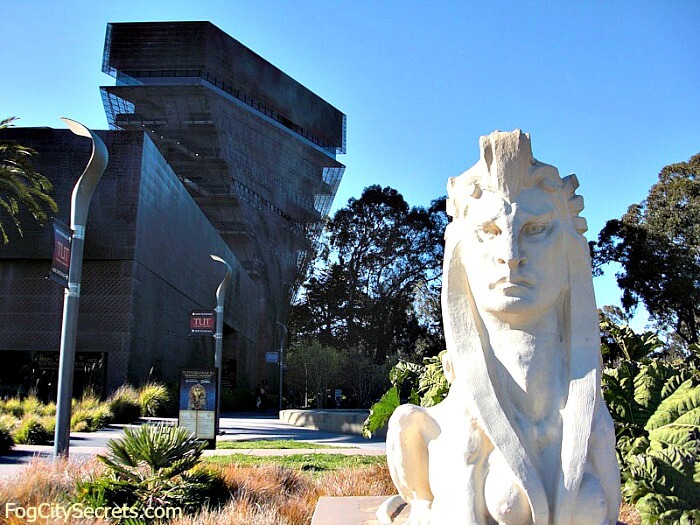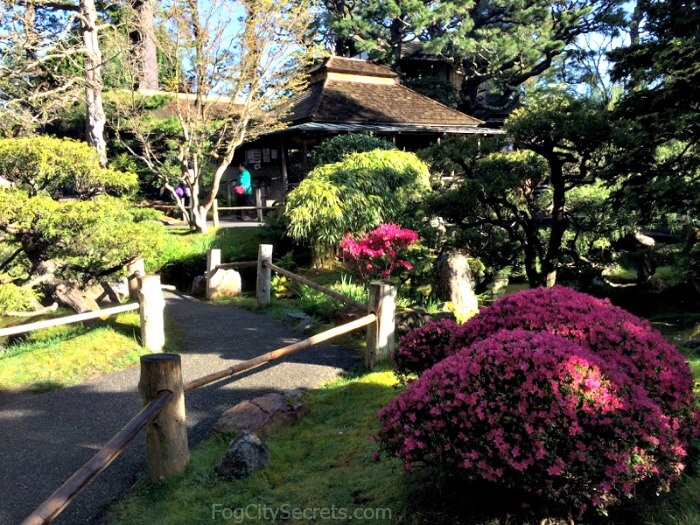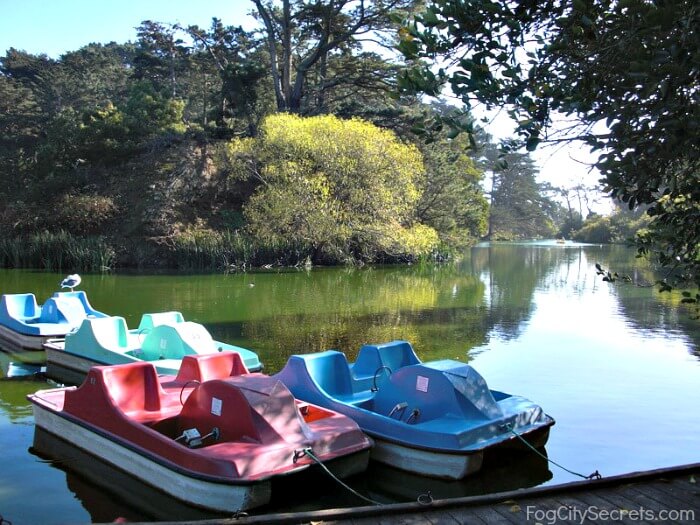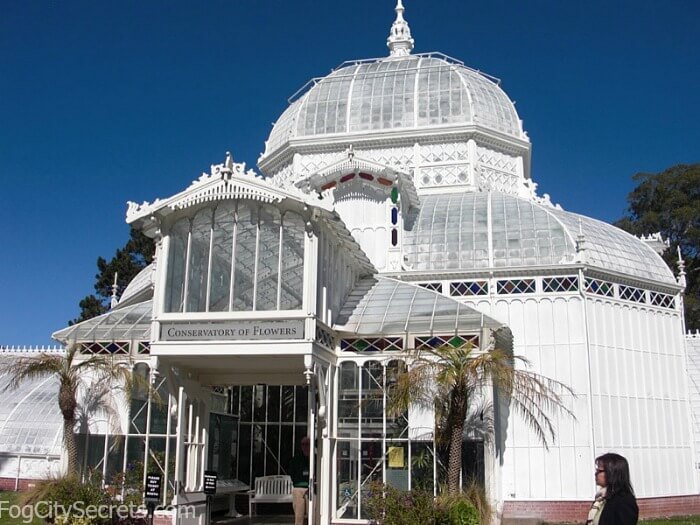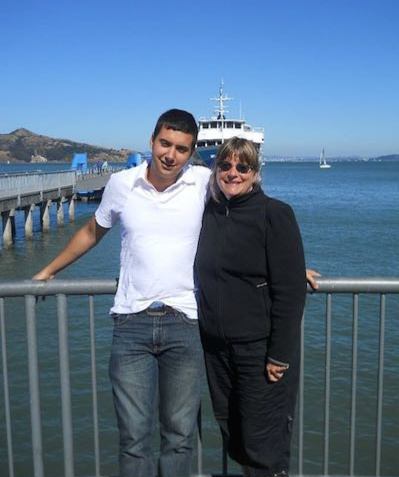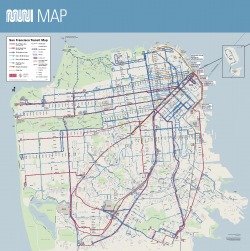- Home
- San Francisco Museums
- Academy of Sciences
The California Academy of Sciences
A local's tips for a fun experience!

The California Academy of Sciences is an enormously popular San Francisco science museum, housing a Planetarium, Aquarium, Rainforest, and Natural History Museum, as well as a well-respected research community of scientists.
Good news: the earthquake Shake Shack is back! One of the best things to experience here, I think.
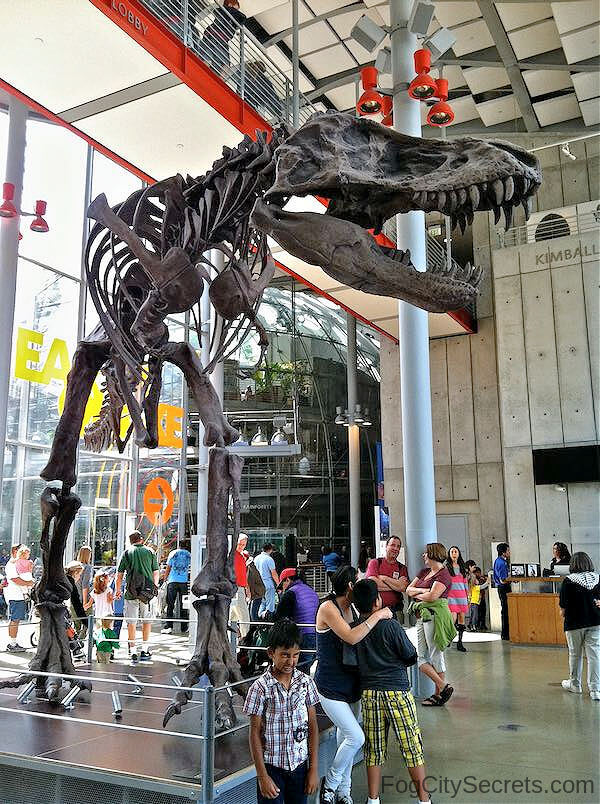 A T-Rex Happy to See You
A T-Rex Happy to See YouMuseum Hours
Monday-Saturday: 9:30-5:00
Sunday:11:00-5:00
Thursday Nightlife: 6:00-10:00 pm (21+)
Entry fees & tickets
- Adults: $49 ($55 peak times)
- Youth (13-18): $45 ($49 peak)
- Child (3-12): $39 ($45 peak)
- Under 3: free
- EBT: $5
Anytime Admission: $59 (good for a year)
You can buy tickets online, or at the door: same price. Tickets are for a specific date. Or you can pay $10 more to get an Anytime Ticket, good for a year.
Any advantage to buying tickets online? You can skip the ticket line and go straight in. This can be a boon on weekends, spring break or in summer when the museum is busier. Otherwise, it doesn't really matter.
Save some money:
Insider Tips:
The entry fees are a bit stiff, but there are ways to get a break.
One way is to use one of the city passes, if you plan on visiting several attractions. Here are the passes that include entry to the Academy of Sciences:
Become a member: free access all year, and you can bring a friend. Use members-only line to enter.
The museum has various programs for reduced entry fees for various groups (free for active-duty military, reduced entry fee for low income people, $3 off for using public transportation, etc.) See Discounts for complete list.
Nightlife - a fun evening program
Every Thursday night is party time at the Academy, for ages 21 and over, from 6-10 pm.
Tickets $25 (some nights $35). Music, dancing, cocktails and entertainment of some kind.
Check the program for each Thursday night.
The Academy also has a full schedule of interesting workshops and lectures on a variety of scientific subjects.
California Academy of Sciences Highlights
- Morrison Planetarium
- Rainforests of the World
- Steinhart Aquarium
- Earthquake Exhibit
- African Hall
- The Living Roof
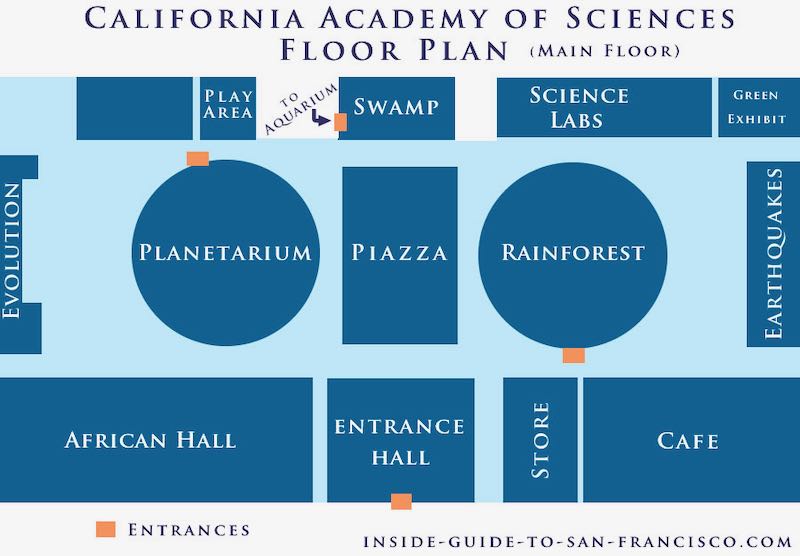
Inside the walls are two huge domes housing the Planetarium and the Rainforest, and a large, glassed-enclosed box containing some plastic chairs and tables (the Piazza).
The popular African Hall from the old museum was preserved and included in the new museum.
The Steinhart Aquarium is in the basement, and what's left of the Natural History Museum exhibits are arranged mostly around the edges of the main floor.

Insider Tip: When to go
Enjoyment of your experience at the museum can hinge on when you go. If you can, avoid school holidays and weekends, or if you can't, go early.
Best time to go: during the school week, after 1:30 or 2:00 p.m. An "inside source" told me most of the school field trips are in the morning, and have left by then.
The San Francisco Planetarium
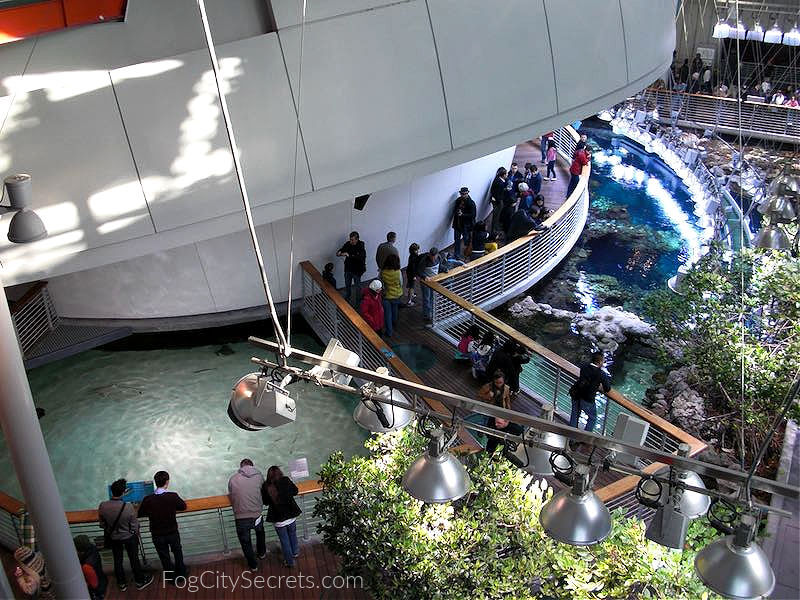 Outside the Planetarium
Outside the PlanetariumThis is a must-see for a visit to the Academy. The vast dome houses a state-of-the-art surround screen and comfortable seating for an amazing, out-of-body experience. (The largest, all-digital dome in the world.)
The films change periodically; they are professionally done and very interesting.
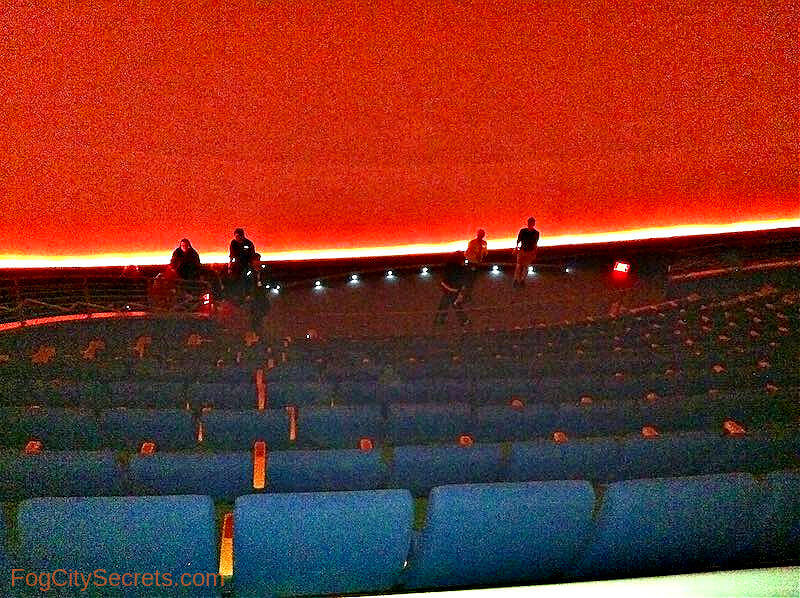 Inside the Planetarium
Inside the PlanetariumCaveat: the Planetarium shows fill up very quickly. One time I got there around 11:00 a.m. and it was already too late.
Reservations are required, but you have to be inside the museum to make the reservation.
Best strategy: get there first thing in the morning and reserve your spot using your smart phone in the lobby as soon as you arrive. Find the QR code posted there, scan it, and go to their website to make the reservation.
Check the museum's website for daily showings: Daily Calendar
Hohfeld Hall: another theater just inside the entryway of the planetarium shows short films on various subjects.
The Rainforest
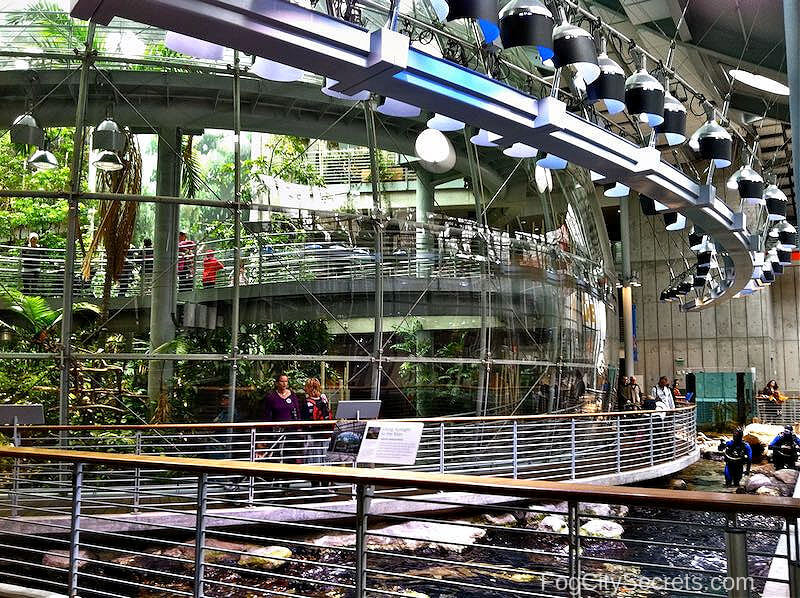 The Rainforest Dome
The Rainforest DomeThe Rainforest is an amazing, 4-level glass structure that recreates the plants and includes some of the creatures of three different rain forests: Borneo, Madagascar, and Costa Rica, all on different levels. At the bottom is the flooded Amazonian floor.
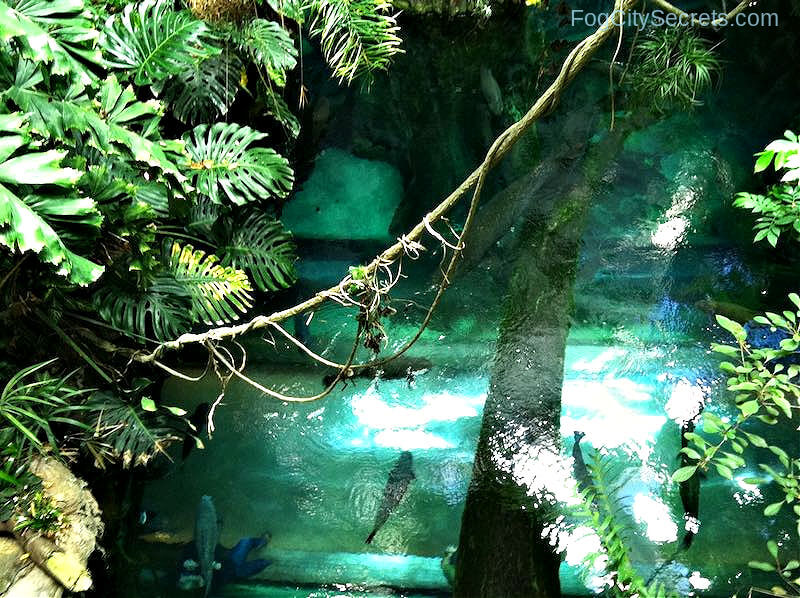 Amazon Floor
Amazon FloorAs soon as you enter, the warmth and steaminess tell you you're in the tropics (kept at 82-85 degrees F. and 75% humidity). A winding ramp takes you all the way to the top.
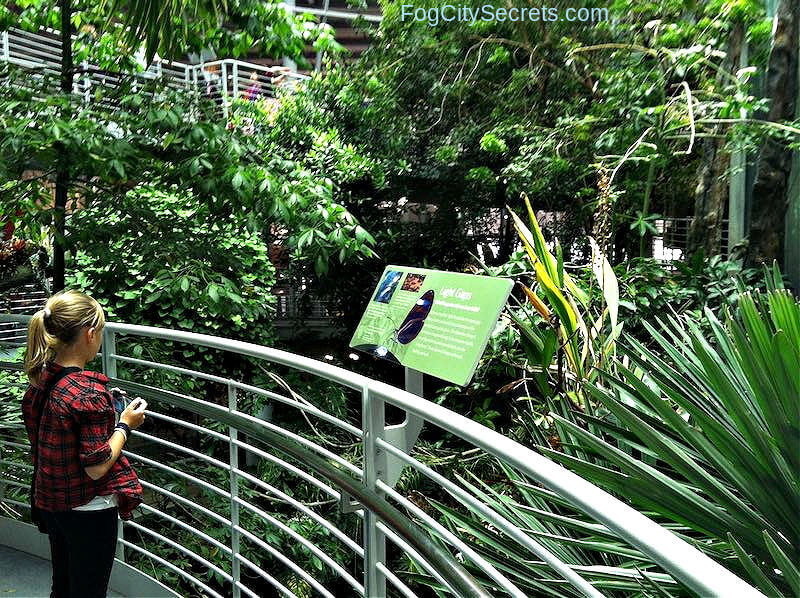 Inside the Dome
Inside the DomeGetting in can require a bit of a wait; go early in the day or when the kids are in school. Over Christmas break, the wait was one hour; midweek, during the school year, there was no wait.
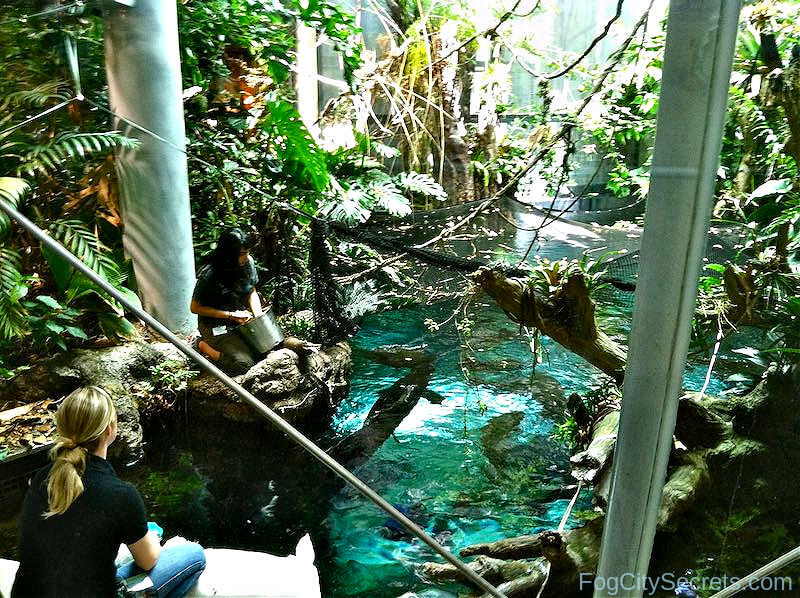 Feeding the Fish
Feeding the FishNative plants from the three rain forests have been planted inside, including some lovely orchids and flowering cacao plants.
Who's living in the Rainforest? Lots of critters!
Watch for the gorgeous Blue and Gold McCaw parrots on the bottom level.
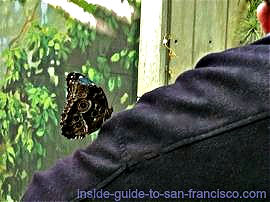
Most of the animals are in cages, but there are 100s of butterflies flying free inside the dome.
Two of them sat on my wrist with their scratchy little feet, while I was trying to photograph something else.
They are so tame, a staff member waits at the exit to check your clothing to make sure none of the butterflies are leaving with you!
You can see lots of beautiful poison dart frogs in an array of colors are living in the Rainforest exhibit, but behind glass, as well as an interesting assortment of snakes and lizards.
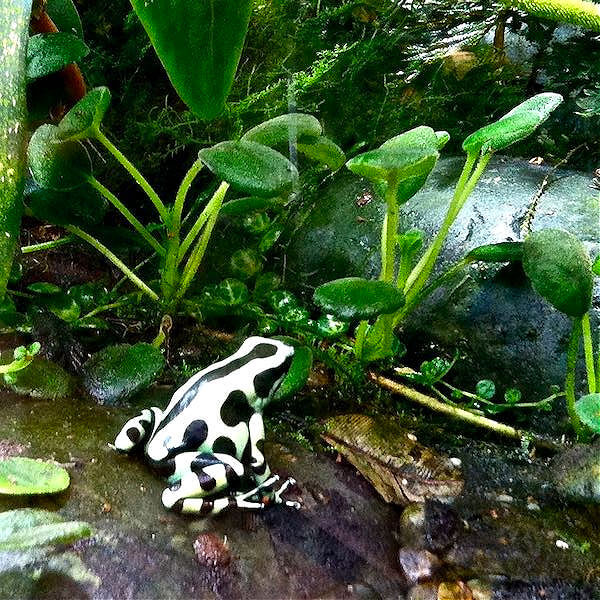 Poison Dart Frog
Poison Dart FrogThe cases with wildlife are scattered all through the Rainforest exhibit, matched up with their respective environments.
But these big guys are running loose! Large Golden Orb-weaver spiders (Nephila clavipes) were introduced a couple of years ago and are building their webs in the rainforest now.
On one visit, I saw quite a few of them hanging in their webs just off the spiral ramp on the way up, but recently I only saw one in its web on the lowest level.
The staff says they don't allow them to build their webs too close to the visitors; apparently, the spiders had gotten a bit too numerous and many had to be removed. They also have some of them in a glass case. Keep a sharp eye!
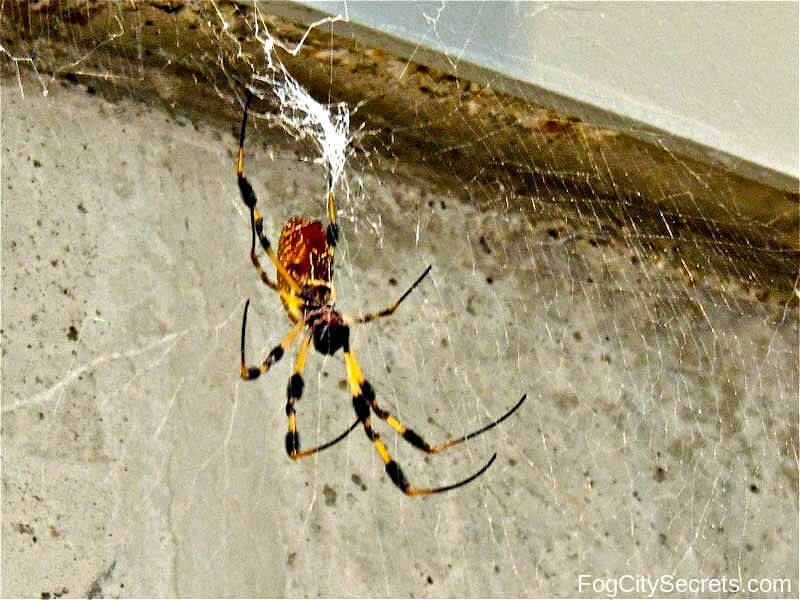 Golden Orb-weaver Spider
Golden Orb-weaver SpiderThey are considered venomous, but the bite only causes some local pain and redness in humans. And according to what I read, they only bite if they are pinched...??
Their webs can be a meter wide, and have been used to regenerate neurons; the fibers have a tensile strength ten times that of steel.
African Hall
Lions and tigers and bears! Well, lions and leopards, baboons, zebras and gazelles.
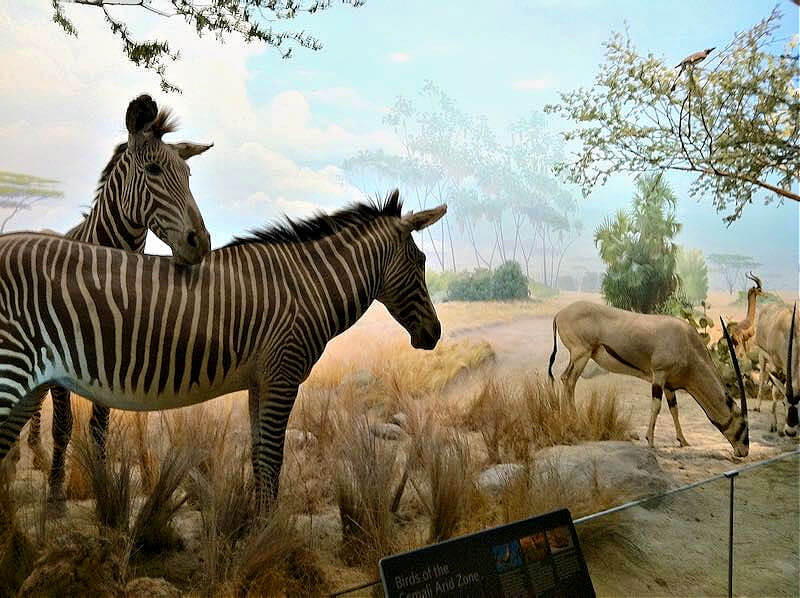 Zebras in the African Hall
Zebras in the African HallThe African Hall is the last holdout of the previous natural history museum on the premises. It's an old-style, taxidermied-animal display, with well-crafted scene paintings to provide a feeling of depth
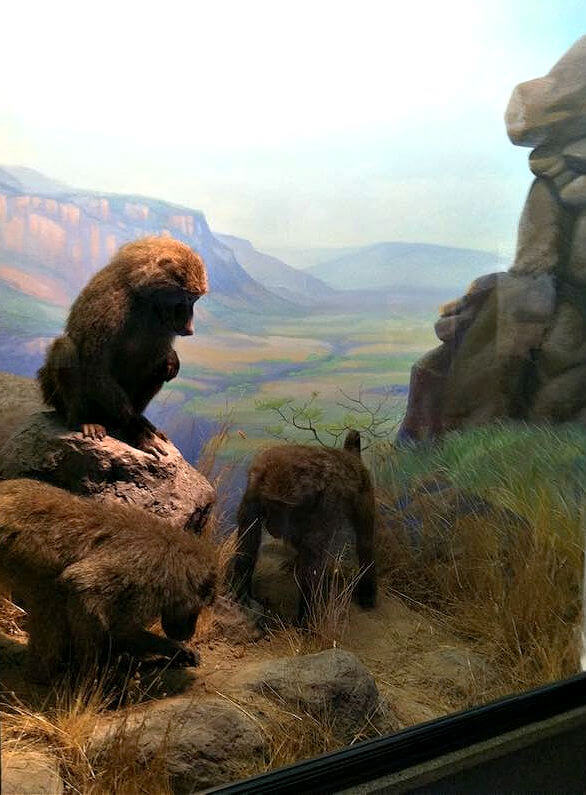 Baboons
BaboonsMy son really loved this section; it's one of my favorites as well. The watering hole diorama at the end has been replaced with a live penguin display.
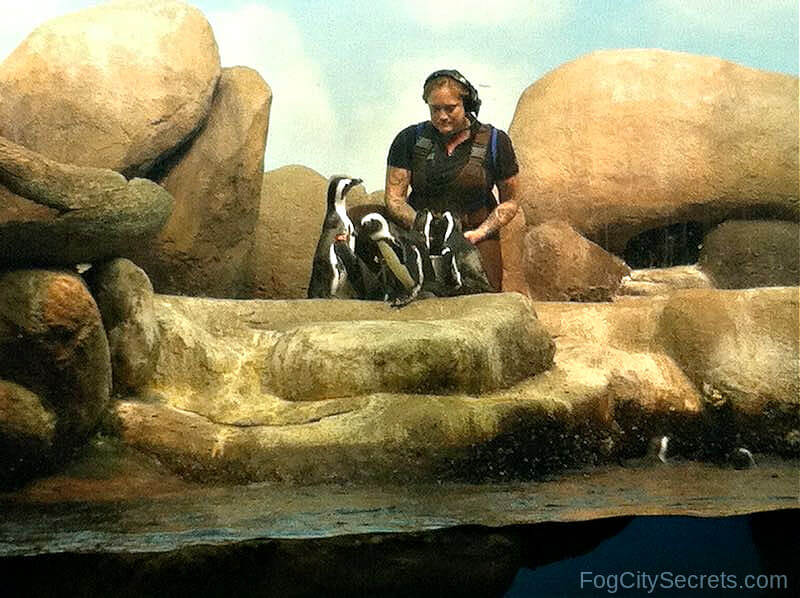
At the other end of the hall is an interesting exhibit, Human Odyssey, illustrating human evolution, including a selection of early hominid skulls.
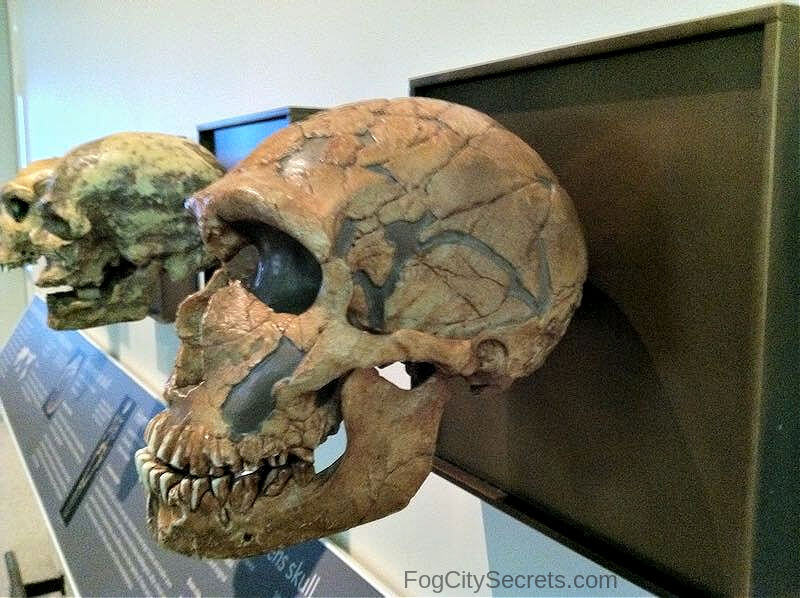
The Steinhart Aquarium
The aquarium is underneath the main level, accessible from the Swamp at the back of the museum.
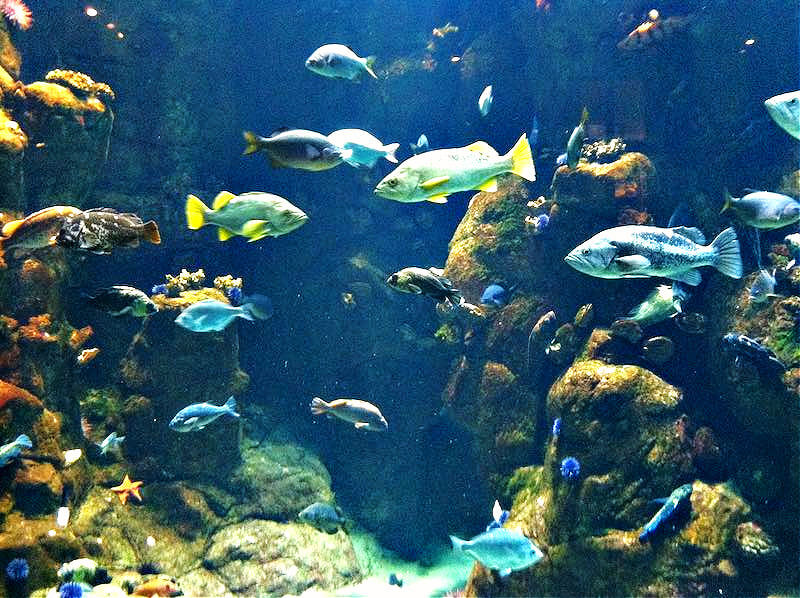 Northern California Reef
Northern California ReefThe aquarium is composed a different sections showcasing freshwater and ocean creatures from different parts of the planet.
Not just fish - look for snakes, amphibians and insects, as well as tanks of ethereal jelly fish.
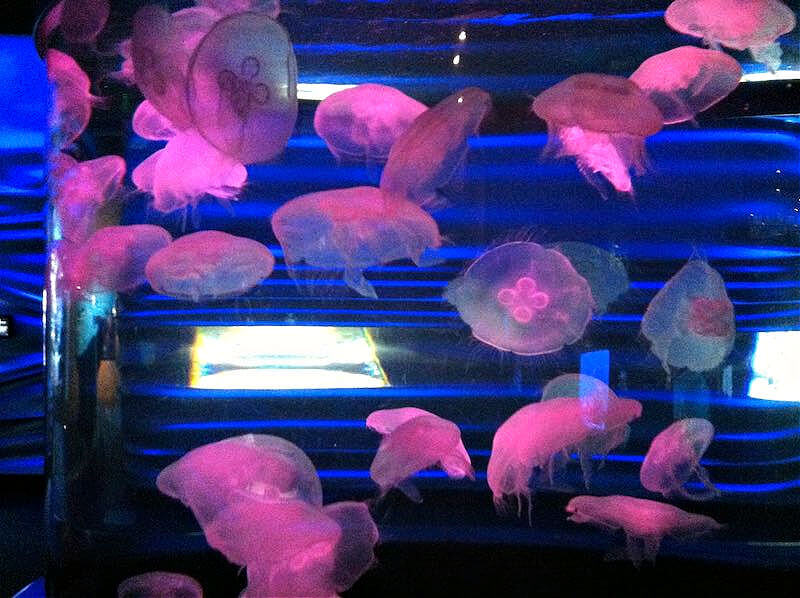 Jellyfish under colored lights
Jellyfish under colored lightsAquarium areas to explore
- Northern California Coast
- Philippine Coral Reef
- Flooded Amazon Forest (walk under it)
- Water Planet (lots of tanks)
- The Tide Pool (handle slimy stuff)
- Animal Attraction Gallery (weird mating habits)
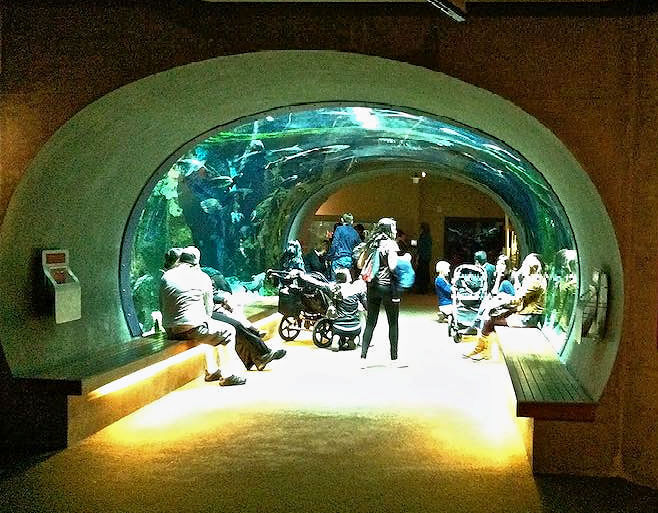 Under the flooded Amazon Floor
Under the flooded Amazon FloorWalk through the acrylic tunnel under the flooded floor of the Rainforest. They say there are piranhas in there.
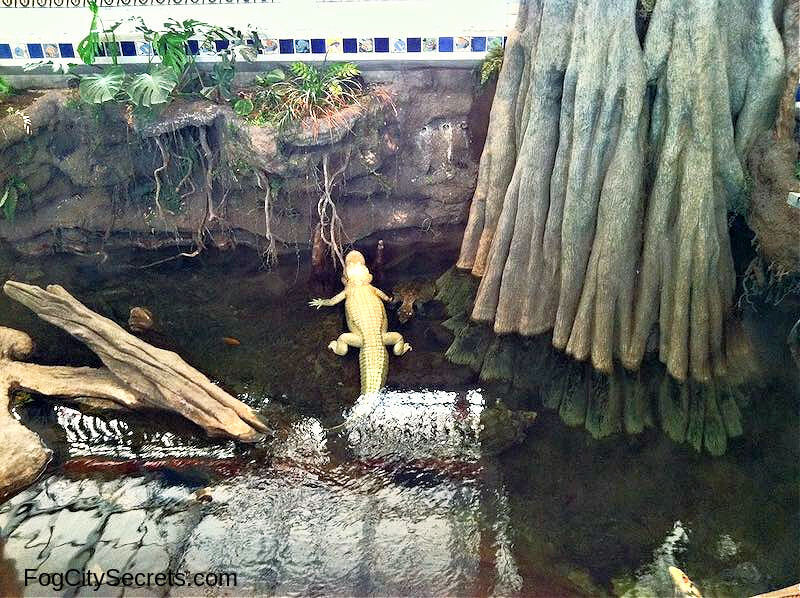 Claude in "the Swamp"
Claude in "the Swamp"The Swamp is a holdover from the old California Academy of Sciences, a glimpse down into the water world of the aquarium on the lower level. The rare albino alligator, Claude, was a favorite of visitors (unfortunately, he passed away in December, 2025, after a long life).
The entrance to the Steinhart Aquarium is off to the left side of the Swamp.
The Living Roof
One of the most-admired features of the design is the Living Roof.
Over 2 acres of plants cover the roof of the museum, with lots of portholes sprinkled here and there for light and air. The greenery keeps the building 10 degrees cooler than it would normally be, and rainwater is collected for irrigation.
There's a small viewing platform towards the front of the building, on the right side, top level.
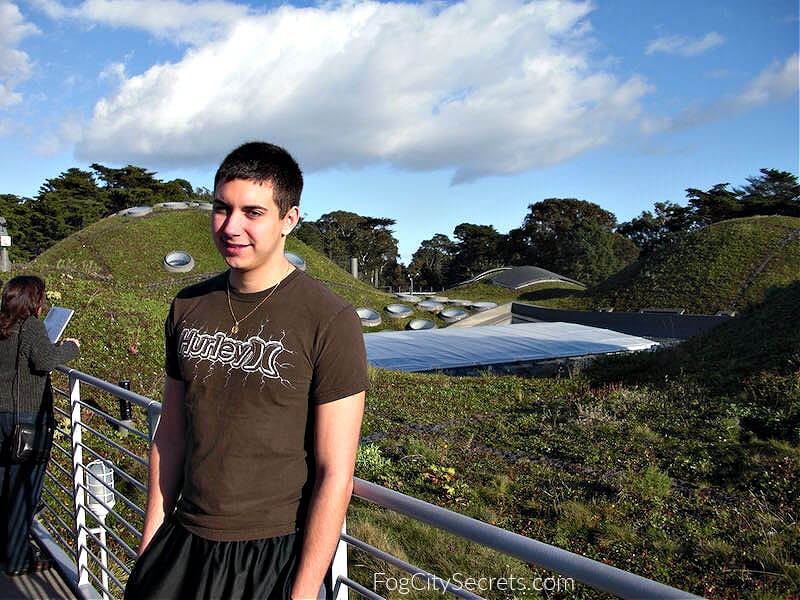 My son on the Living Roof
My son on the Living RoofThe Earthquake Exhibit - The Shake House
Want to experience a big San Francisco earthquake without any risk?
Dare to enter the Shake House!
It's returned, after a several-year absence. The Shake House was one of the best features of the museum, IMO.
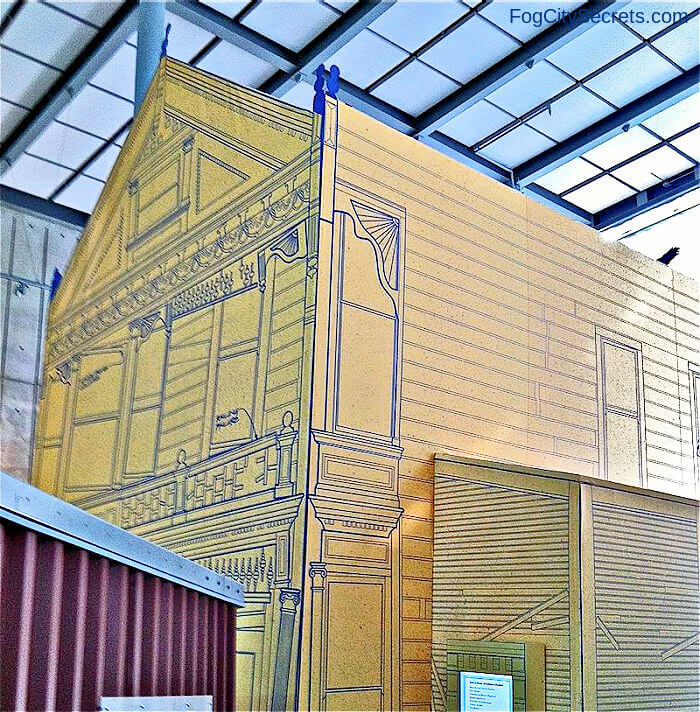 The Shake House
The Shake HouseIt's a dollhouse facsimile of a San Francisco Victorian, chandelier and all. Plus a window looking out at the Painted Ladies of Alamo Square.
You go into the exhibit in a group, and watch a short video about the quakes.
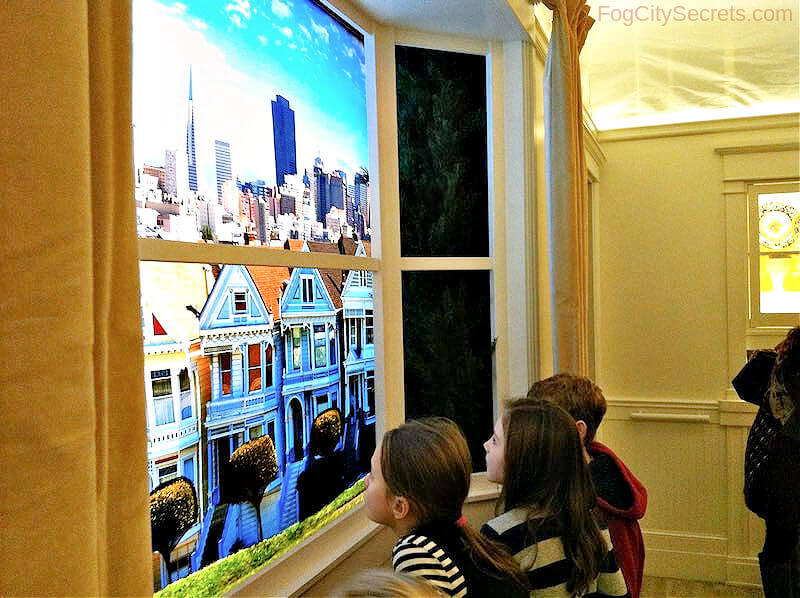 Inside the Shake House
Inside the Shake HouseHang on to the railings, because here comes the 1989 Loma Prieta quake! 6.9 on the Richter scale.
And just when you've caught your breath, pow! The Big One! 7.9 on the Richter scale, April 18, 1906.
It's not really scary, but the power is impressive; I was in there with a group of 7 year olds and they were having grand time (you have to be at least 4 years old to go in there). It is a powerful reminder, however, of what's practically under our feet.
I was in San Francisco for the 1989 quake and the simulation felt pretty much as I remembered it. The 1906 sim is a wake-up call for us locals.
In addition to the Shake House, there are a number of interesting exhibits in the Earthquake section to see as well, including how to build to withstand a quake, how faults work, and how to prepare for one.
Where to eat...
The Academy Cafe (informal) is on the main level, and the Moss Room (fancier) is downstairs.
Or you can eat outside at the Terrace Cafe (good food, less crowded, and quieter).
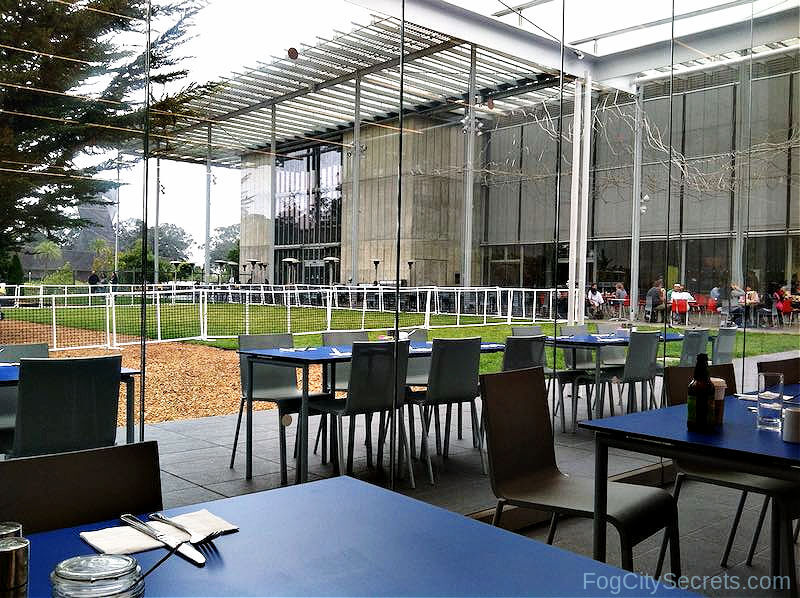 The Terrace Cafe
The Terrace CafeThe Gift Shops
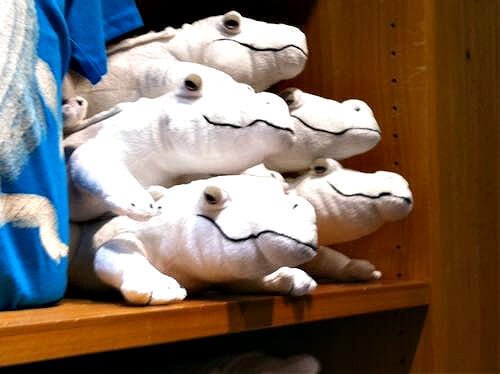
Three nice gift shops: big variety of tempting books, toys, games, and gadgets.
Take home a cuddly version of Claude.
History of the California Academy of Sciences
The Academy had its start in 1853 as an organization of scientists and gradually morphed into the museum we have now in Golden Gate Park . In addition to the exhibits created for the public, the Academy is a major research institution that emphasizes natural history, botany, biology, anthropology and the environment.
The 1906 earthquake tragically destroyed the building on Market street, along with most of its collection, and they basically had to start over.
The California Academy of Sciences moved to its present location in Golden Gate Park in 1916, and subsequently added more wings to the building as it added and aquarium and planetarium to the original natural history museum.
Yet another earthquake in 1989, the Loma Prieta quake, caused serious damage to parts of the building and required a move to a temporary home on Howard Street, in the South of Market area.
There followed the usual political struggle about retrofit vs. tear down and rebuild, and again the new building faction won, similar to the story of the de Young Museum across the way.
A well-respected Italian architect, Renzo Piano, was chosen to design the new building, which opened in 2008.
The resulting building was praised to the skies by the architecture world and the media, and won numerous prestigious awards for it's green building materials and energy-conserving functions, such as using recycled blue jeans for insulation, and the sun for 90% of its lighting.
Review of the new California Academy of Sciences building.
In a nutshell, people seem to either loved the new building or they were gnashing their teeth at what has replaced their favorite San Francisco museum. For more information, read my candid review of the new California Academy of Sciences.
From talking to friends and acquaintances about this, there appeared to be an even split between the two camps. Those who loved the old museum were unhappy, but those who never experienced the previous museum thought the new one was great. The reviewers on yelp.com awhile back reflected the same division.
Getting There and Parking
Location...
The California Academy of Sciences is located on MLK Drive in Golden Gate Park, across from the de Young Museum. See map below.
Public Transportation
The 5-Fulton bus and the N-Judah streetcar will bring you within a couple of blocks of the museum.
The free Golden Gate Park shuttle runs along JFK Drive in the eastern half of the park and stops near the Academy. Runs daily M-F 12-6 and Sun/Sat 9-6.
Parking for the museum...
Parking can usually be found on MLK Drive within reasonable walking distance from the museum. On busy days (sunny weekends and days of very popular special exhibits), parking is trickier. You'll have to park farther away on MLK Drive, or try the parking spots around Blue Heron Lake nearby (about a five minute walk). Outside the park is much tougher.
JFK Drive is permanently closed to cars now.
The Parking Garage...
There's parking garage under the de Young Museum, a bit expensive ($5/hr weekdays, $6/hr weekends), but not terrible for a few hours.
There is one entrance on 10th Avenue at Fulton, on the north side of the park, and another just off MLK Drive near the Academy of Sciences.
Map of California Academy of Sciences
And nearby attractions in Golden Gate Park.
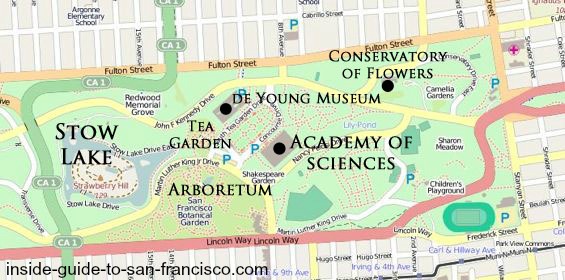
Discover all the cool things to do in the park in my Complete Guide to Golden Gate Park. Main attractions and hidden gems.
More to see nearby...
Share this page:
